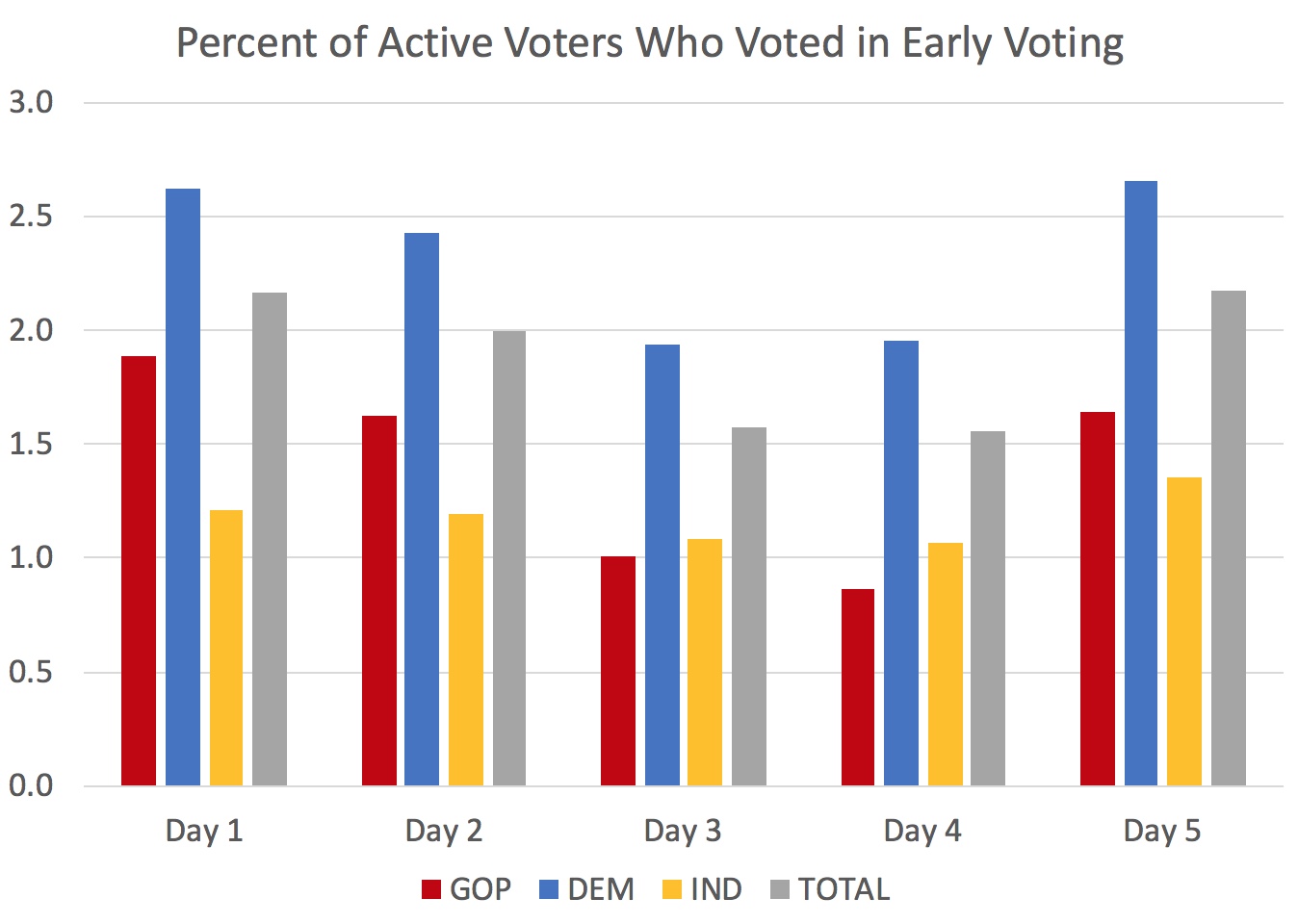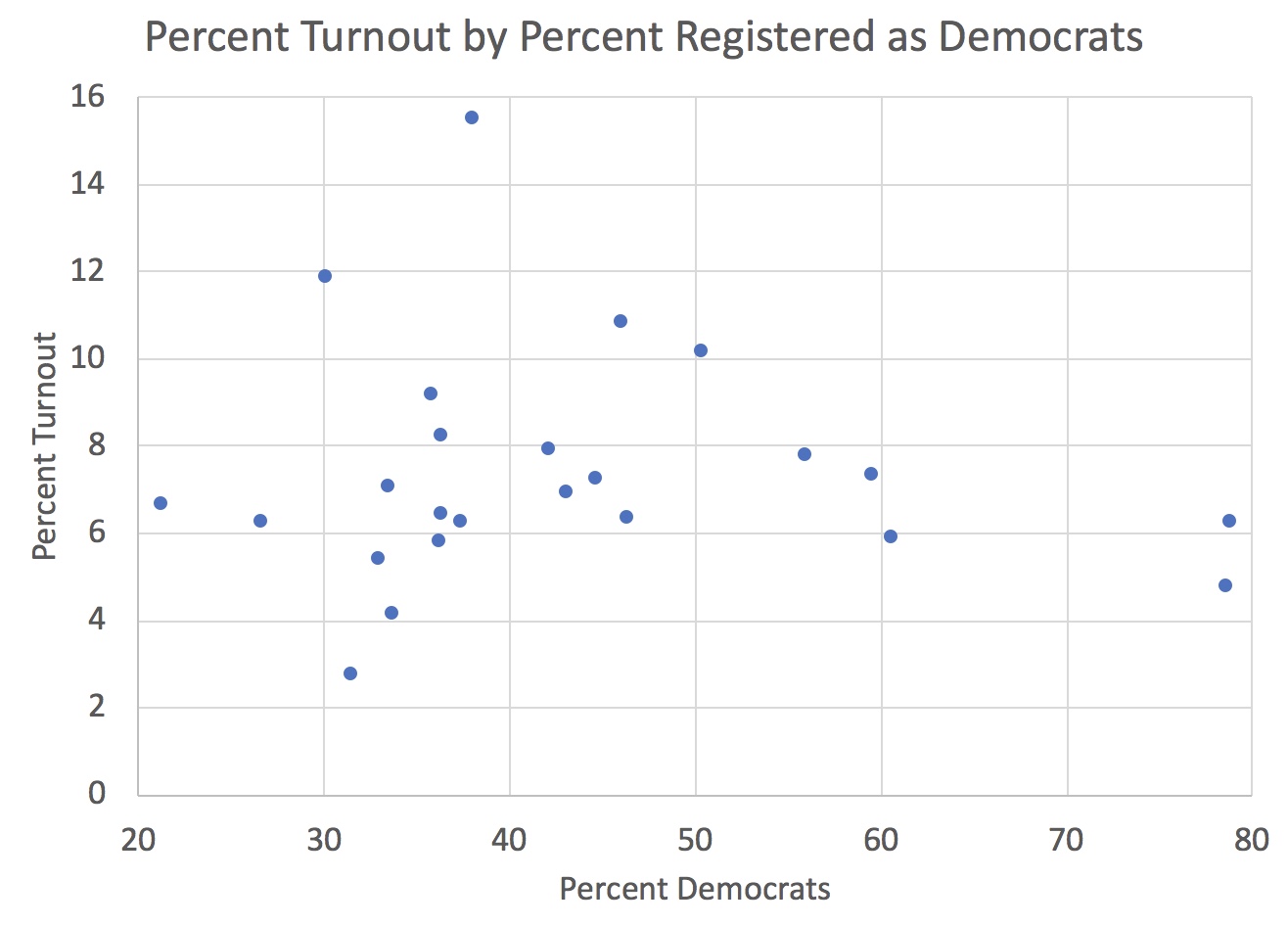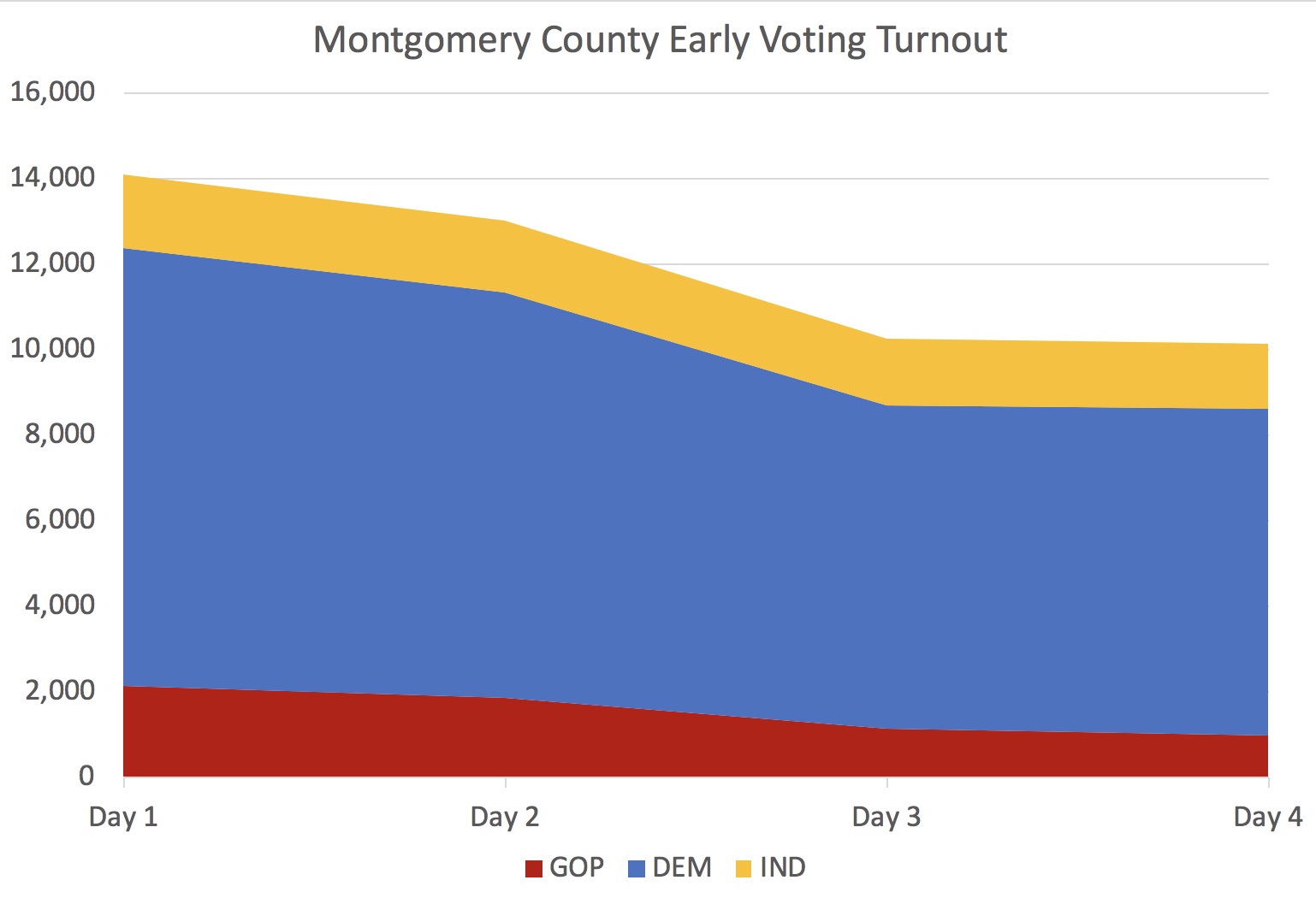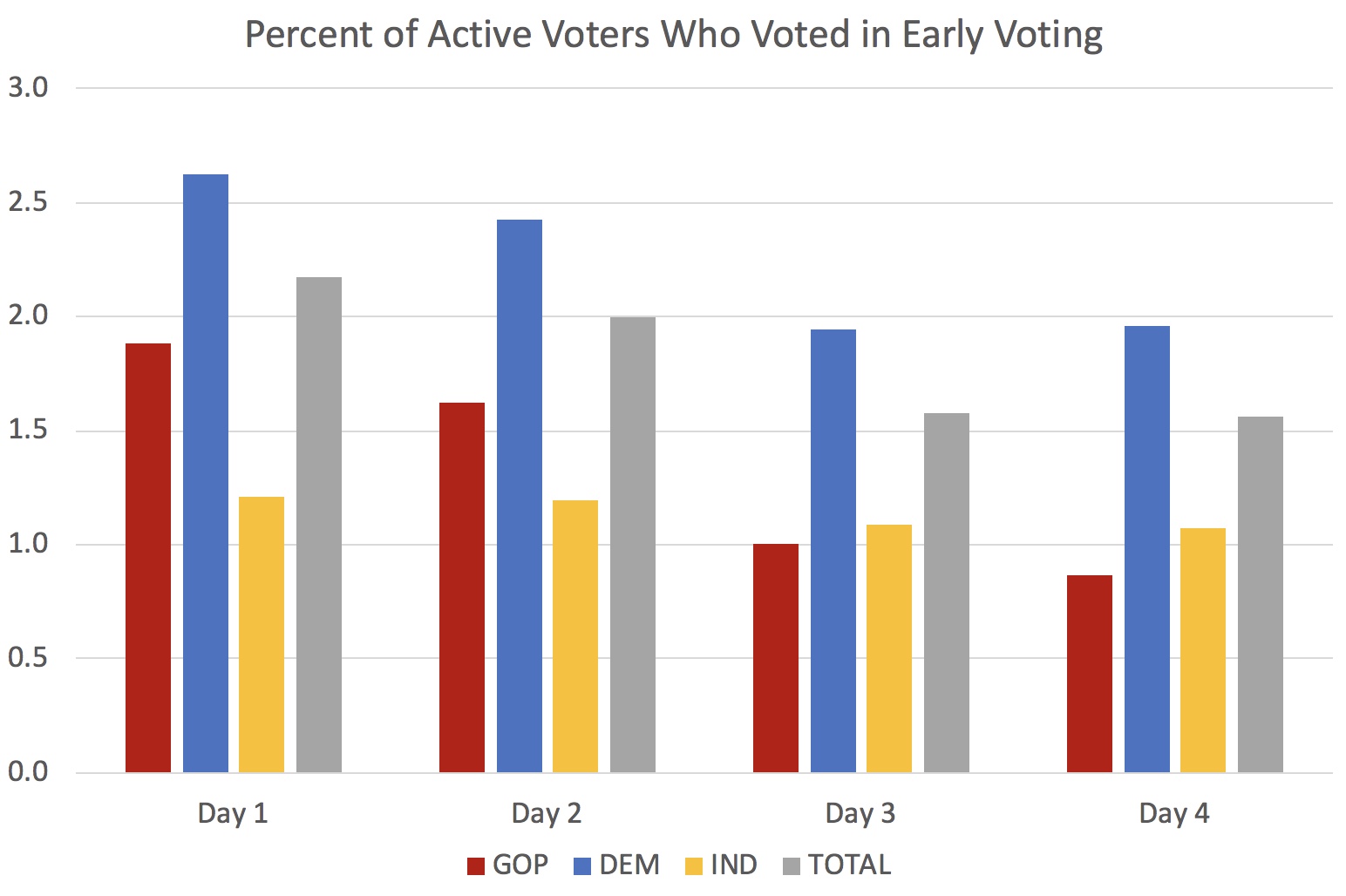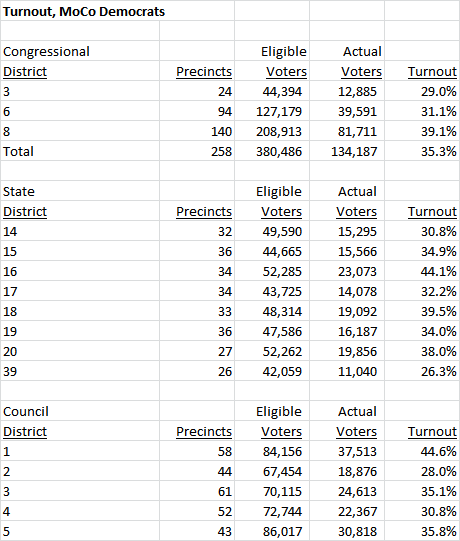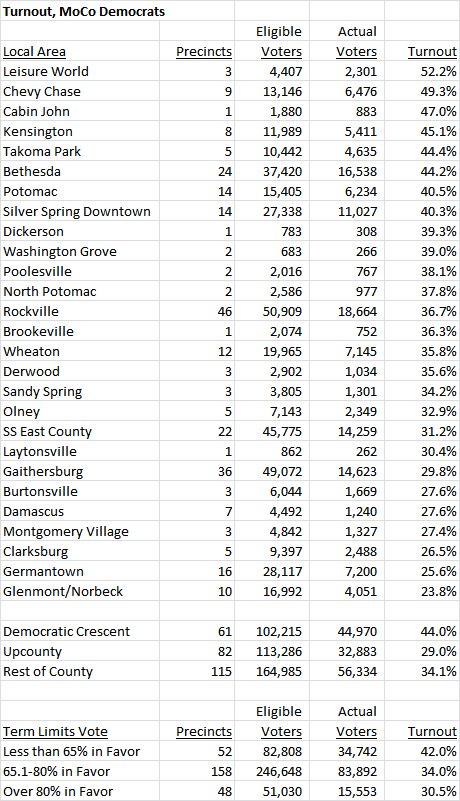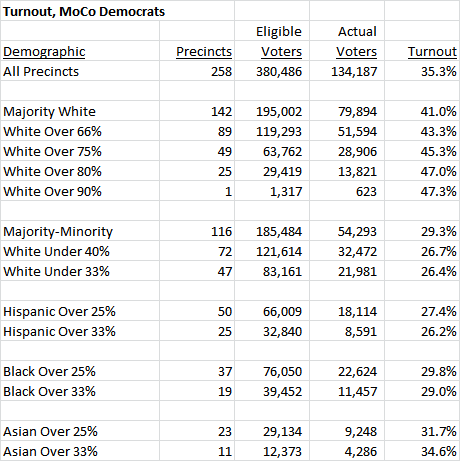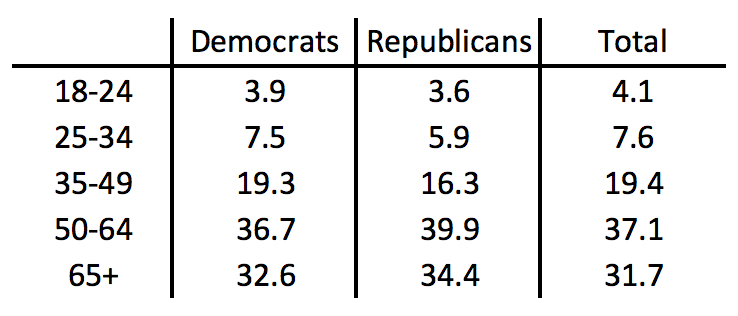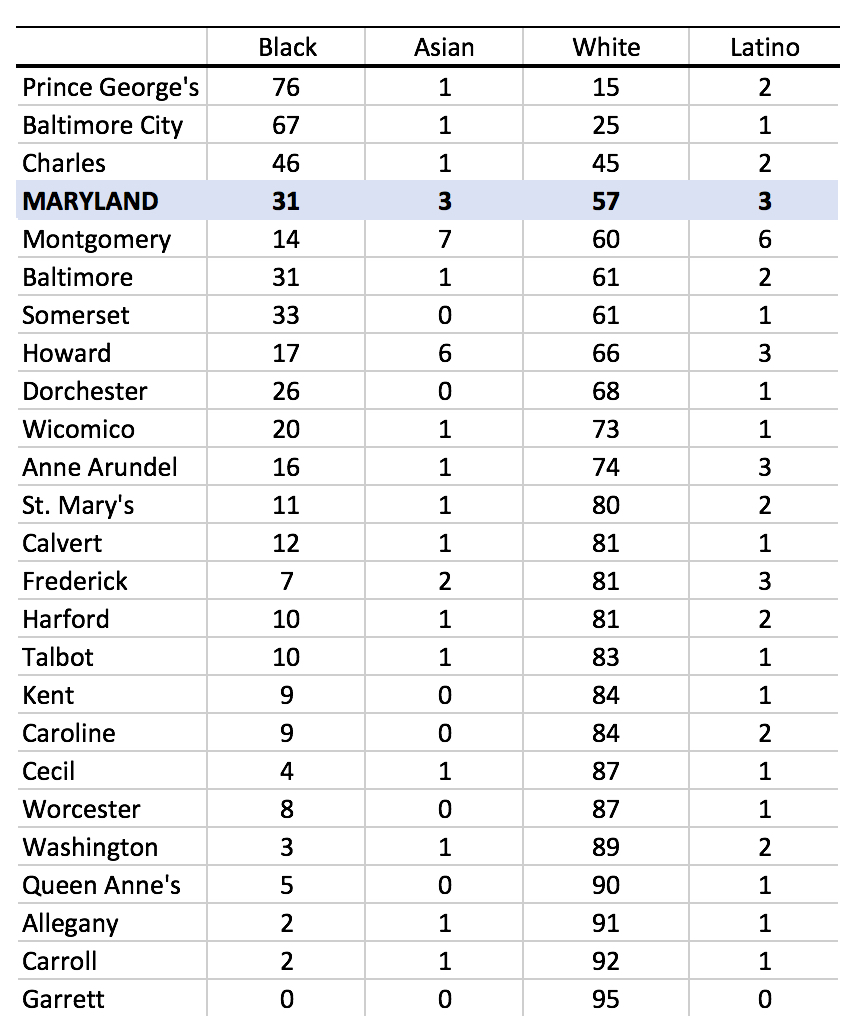Today, I am pleased to present a guest post by Adam Pagnucco:
If Montgomery County Democrats want to substantially increase their turnout in the 2018 election, they are going to have to reach out to Democratic non-voters who are disproportionately young, Latino, African American, low income and who live far from the party’s traditional Downcounty strongholds.
How can that be done?
First, this is not a job that can be entrusted to candidates alone. Candidates are in the business of winning elections, and for them, that means targeting regular voters. That’s perfectly understandable. Asking candidates to do things that don’t maximize their chances to win is a non-starter. So this is a job for the party.
Montgomery County’s Democratic Party is in some ways the envy of the rest of the state. It is large and well-financed. It can draw on lots of volunteers and activists, many of whom have substantial campaign experience. It has a system of precinct officials that most county parties don’t have. But in recent years, it has presided over declining turnout. Like any organization, even successful ones, the party can improve. Here’s how.
1. Buy an email list and use it.
At the moment, the party does not have an extensive email list. It needs one – badly. The party should purchase an email list of regular voters – including unaffiliated ones – and start pumping out regular blasts. The state party does this and the county party should start doing it too. But in addition to the frequent attacks on the GOP that appear in state party emails, the county party can also celebrate the successes of local government. The Montgomery County Council regularly passes progressive legislation, often on unanimous votes, and the County Executive leads a progressive administration. The declining local media misses out on a lot of these things, so the party should step in and spread the word.
2. Get stronger on social media.
The county party’s Facebook page needs to be bolder and more topical. It should be aggressive about going after the GOP and it should also trumpet Democratic successes. Ads should be used to spread particularly good posts and to build the like count.
3. Contact non-voters and new voters directly.
Years ago, before the spread of e-recruitment, the party had a system for welcoming new voters. That system should be reinstated and updated. The party can use its precinct officials to reach out to non-voters and new voters on the ground. One way would be to send precinct officials lists of all of these voters and have them circulate an online survey through flyers in their neighborhoods. Do they vote? If not, why? Is it lack of information? Are there important issues they want addressed? Ask them to sign up for the email list and Facebook page to stay in touch with the party.
4. Spotlight new Democrats.
Non-voters and new voters don’t look like Mike Miller or Mike Busch. They look like many young, new Democratic state legislators like Senator Craig Zucker and Delegates Eric Luedtke, David Fraser-Hidalgo, Ariana Kelly, Marc Korman, Marice Morales, David Moon, Will Smith, Pam Queen and Shane Robinson. (And those are just the ones who first took office in 2010 or later.) Let new Democrats like these do guest communications in the blast emails and also on a county party blog. Then spread them through Facebook and Twitter.
5. Get rid of the sample ballot.
The above items will cost money, and a good place to get it is by getting rid of the sample ballot. This drab, antiquated pamphlet mailed to all Democrats before the general election looks worse than a typical coupon book and is probably discarded promptly by most recipients. The party spends tens of thousands on printing and mailing it every cycle. Besides causing headaches for no good reason, the sample ballot distracts from the party’s central duties because it is the vehicle for communicating party positions on ballot questions, and that can cause problems.
One example was the party’s decision to go against labor on the police effects bargaining ballot question in 2012. Regardless of who was right or wrong, the decision caused labor to picket the party’s spring fundraiser and resulted in wholesale turnover on the party’s central committee. The party’s primary duty is to market its candidates and their successes. It should not concentrate on making policy decisions outside of its stated platform; those should be left to elected officials.
The sample ballot has been around for a long time and it has its defenders, but party strategists need to ask themselves the following question. How many email addresses, Facebook ads, staff hours and other voter touches can be purchased by freeing up money from the sample ballot? And what mix of all of these factors generates the greatest cost effectiveness for outreach?
If all of these things are done, will that guarantee higher turnout among MoCo Dems who currently don’t vote in 2018? Well, there are few guarantees in politics, folks. But I will guarantee this: if none of these things are done, turnout will not improve and Governor Larry Hogan will get a second term.
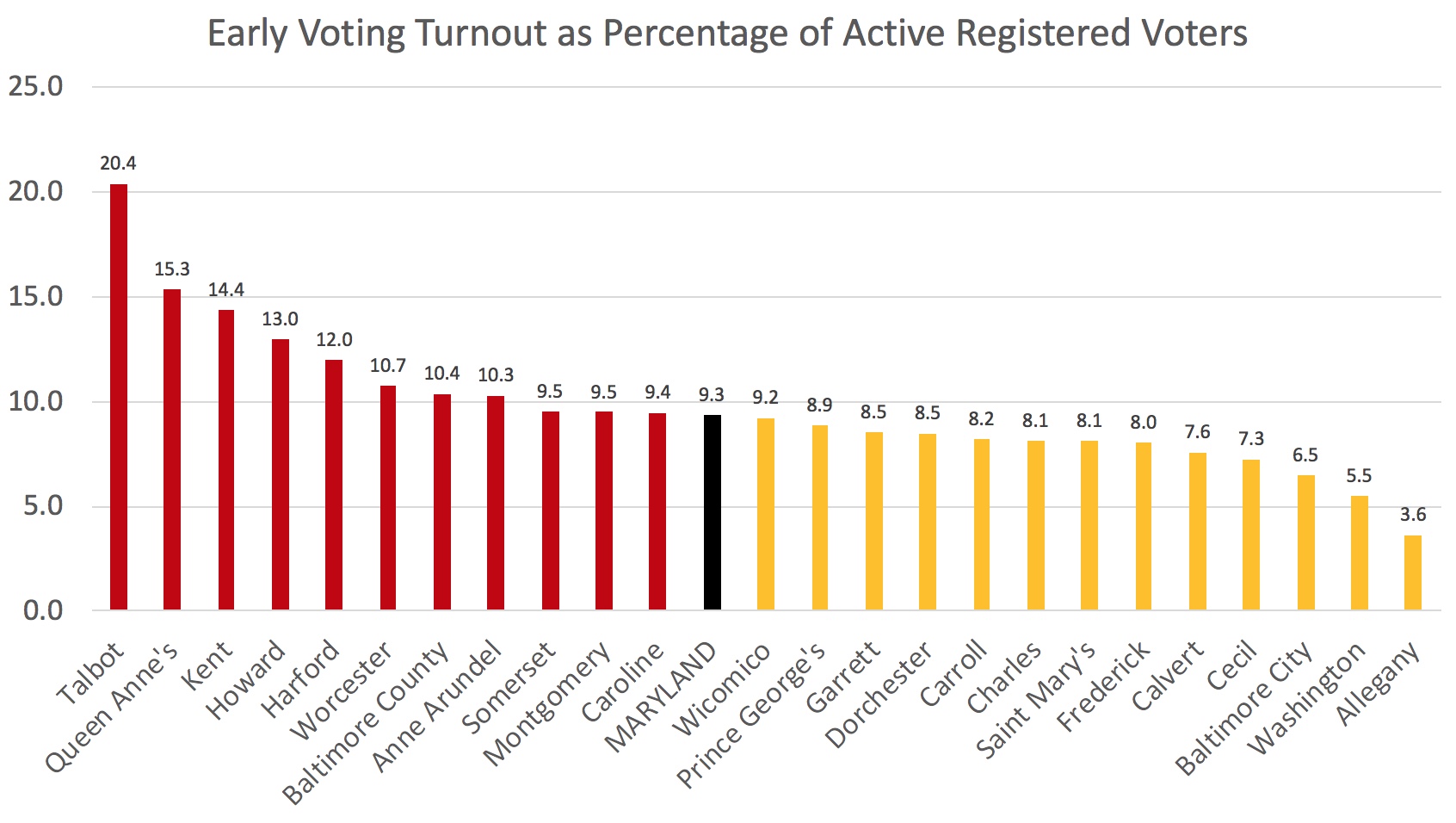 At the end of yesterday, 9.3% of registered Maryland voters had taken part in early voting. Talbot continues to lead the early voting pack as over one-fifth of its registered voters have now cast ballots. Allegany trails at the end with just 3.6% having participated in early voting. Indeed, all Western Maryland counties lag in early voting.
At the end of yesterday, 9.3% of registered Maryland voters had taken part in early voting. Talbot continues to lead the early voting pack as over one-fifth of its registered voters have now cast ballots. Allegany trails at the end with just 3.6% having participated in early voting. Indeed, all Western Maryland counties lag in early voting.

